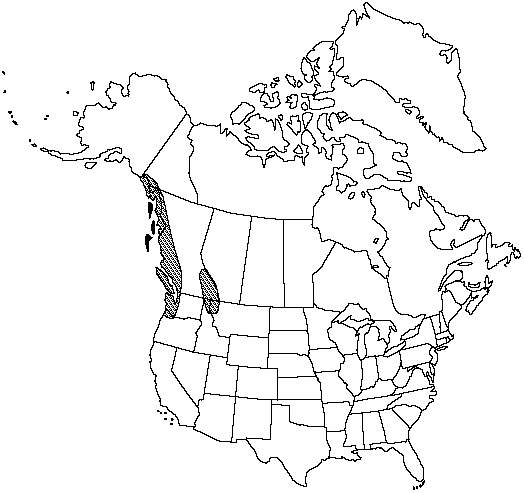Huperzia occidentalis
Phytologia 70: 201. 1991.
Shoots erect, indeterminate, 12–20 cm, becoming long-decumbent, 4–20 cm; leaves in mature portion slightly smaller than in juvenile portion; distinct annual constrictions present; juvenile growth erect. Leaves reflexed (juvenile portion) or spreading to reflexed (mature portion), light green to whitish green, lustrous; largest leaves oblanceolate, broadest at 1/2–3/4 length, 6–10 mm; smallest leaves narrowly triangular, broadest at base, 4–7 mm; margins with small papillae; stomates present on both surfaces, numerous (36–80 per 1/2 leaf) on adaxial surface. Gemmiferous branchlets produced in 1 pseudowhorl at end of annual growth; gemmae 4–4.5 × 3.5–4 mm; lateral leaves broadly obtuse, widest above middle, 1.25–1.5 mm wide. Spores 30–38 µm.
Habitat: Terrestrial in shaded conifer forests and swamps, often along streams and in marshes
Elevation: 10–1000(–2000) m
Distribution

Alta., B.C., Yukon, Alaska, Idaho, Mont., Oreg., Wash.
Discussion
Huperzia occidentalis is similar to the eastern H. lucidula and occupies similar habitats.
Selected References
None.
Lower Taxa
"broadest" is not a number.